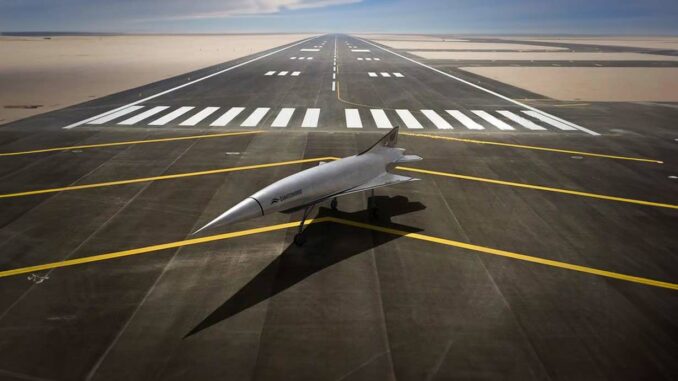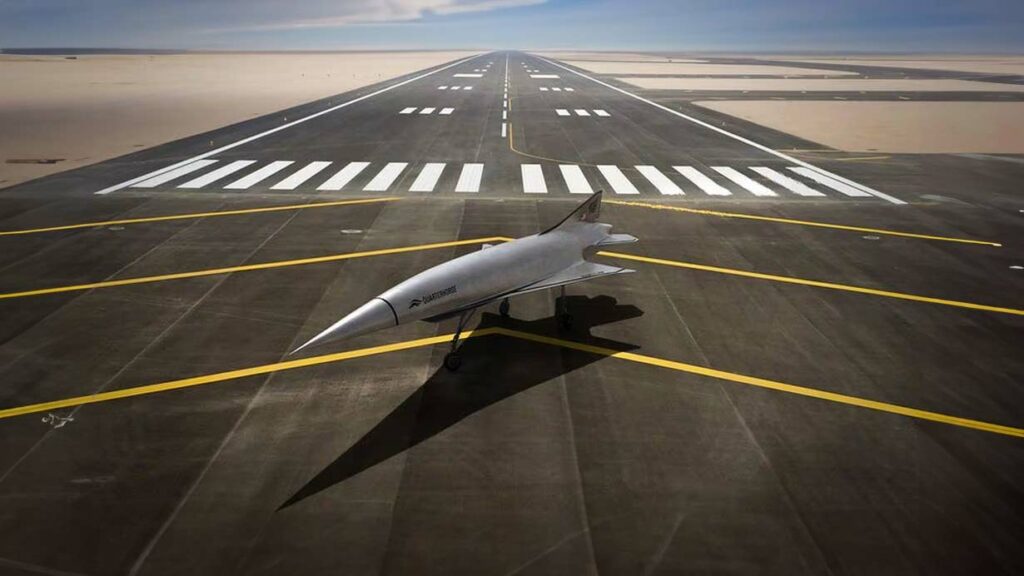
Hermeus, in partnership with the US Defense Innovation Unit, is preparing to test its prototype commercial aircraft, the Quarterhorse, to demonstrate its hypersonic capabilities. This project marks a significant step forward in the development of hypersonic technologies, with major implications for the defense and aeronautics industries.
In a field where speed and innovation are crucial, Hermeus, a company specializing in hypersonic technology, recently announced a strategic partnership with the Defense Innovation Unit (DIU) to demonstrate its prototype hypersonic commercial aircraft, the Quarterhorse. This aircraft, designed to test the limits of speed and aeronautical technology, could revolutionize the defense industry and beyond.
Quarterhorse technical specifications
Hypersonic capabilities and innovation
The Quarterhorse is designed to demonstrate hypersonic capabilities, with the ambition of flying at speeds in excess of Mach 5. At the heart of this technical feat is the Chimera propulsion system, a technology based on General Electric’s J85 turbojet engine, and adapted to meet extreme speed requirements.
Thermal Management and Power Generation
In addition to propulsion, advanced technologies in thermal management, power generation and mission system capabilities are also integrated. These elements are essential for maintaining aircraft performance and safety in hypersonic flight conditions.
Strategic and commercial implications
Impact on defense programs
The Quarterhorse project, part of DIU’s HyCAT program, aims to increase the US Department of Defense’s hypersonic flight test capability. With over 70 military programs focusing on the development of hypersonic weapons and aircraft, demand for such technologies is growing rapidly.
Benefits for the aerospace industry
This project is not limited to the military domain; it has the potential to transform the commercial aviation industry, offering the prospect of faster passenger and freight flights in the future.

Consequences and future developments
Technical challenges and innovations
The development of hypersonic aviation poses considerable technical challenges, particularly in terms of material strength, heat management and flight stability. The advances made with the Quarterhorse could pave the way for new innovations in these areas.
International collaboration and competition
The collaboration between Hermeus and DIU, as well as the involvement of other international companies such as Hypersonix, Rocket Lab and Fenix Space, underlines the importance of international cooperation in the development of hypersonic technologies. This dynamic also creates a competitive environment that stimulates innovation.
Economic and security outlook
Commercial potential
The exploration of hypersonic technologies by companies like Hermeus is creating new business opportunities. Advances in this sector could reduce production costs and lead times, making hypersonic travel more accessible.
Safety considerations
Safety remains a major concern, especially given the extreme speeds and high temperatures involved. Successful testing of the Quarterhorse will be crucial in demonstrating the viability and safety of these technologies at hypersonic speeds.
Hermeus’ Quarterhorse project, in partnership with the Defense Innovation Unit, represents a significant milestone in aviation history. With the aircraft scheduled to make its maiden flight in 2024, this project is bound to attract growing interest
from the defense and aeronautics industries. The advances made with this prototype could not only meet current defense needs, but also pave the way for a new era of faster, more efficient air travel. Hermeus’ success in this field will have profound and lasting repercussions, redefining the possibilities of hypersonic technology for decades to come.
War Wings Daily is an independant magazine.